-
EXECUTIVE SUMMARY
-
1.1.
-
Market Overview
-
Key Findings
-
Market Segmentation
-
1.4.
-
Competitive Landscape
-
Challenges and Opportunities
-
Future
-
Outlook
-
MARKET INTRODUCTION
-
Definition
-
Scope
- Research Objective
- Assumption
-
of the study
-
2.2.3.
-
Limitations
-
RESEARCH METHODOLOGY
-
Overview
-
Data
-
Mining
-
Secondary Research
-
Primary Research
- Primary
- Breakdown of Primary Respondents
-
Interviews and Information Gathering Process
-
Forecasting Model
-
Market Size Estimation
- Bottom-Up
- Top-Down Approach
-
Approach
-
Data Triangulation
-
3.8.
-
Validation
-
MARKET DYNAMICS
-
Overview
-
Drivers
-
Restraints
-
Opportunities
-
MARKET FACTOR ANALYSIS
-
Value chain Analysis
-
Porter's Five Forces Analysis
- Bargaining Power of Buyers
- Threat of Substitutes
- Intensity
-
5.2.1.
-
Bargaining Power of Suppliers
-
5.2.3.
-
Threat of New Entrants
-
of Rivalry
-
COVID-19 Impact Analysis
- Market Impact Analysis
- Regional Impact
- Opportunity and Threat Analysis
-
ASEPTIC SAMPLING MARKET, BY APPLICATION (USD BILLION)
-
Pharmaceuticals
-
Biotechnology
-
Food and Beverage
-
Environmental Testing
-
ASEPTIC SAMPLING MARKET, BY TECHNIQUE (USD BILLION)
-
Manual
-
Sampling
-
Automated Sampling
-
Semi-Automated Sampling
-
ASEPTIC SAMPLING MARKET, BY TYPE (USD BILLION)
-
Syringes
-
8.2.
-
Bags
-
Valves
-
Containers
-
ASEPTIC SAMPLING MARKET,
-
BY END USE (USD BILLION)
-
Laboratories
-
Manufacturing Plants
-
Research Institutions
-
ASEPTIC SAMPLING MARKET, BY REGIONAL
-
(USD BILLION)
-
North America
- US
- Canada
-
Europe
- Germany
- UK
- France
- Italy
- Spain
- Rest of Europe
-
10.2.4.
-
Russia
-
APAC
- China
- India
- Japan
- Malaysia
- Thailand
- Indonesia
- Rest of APAC
-
10.3.4.
-
South Korea
-
South America
- Brazil
- Argentina
- Rest of South America
-
10.4.2.
-
Mexico
-
MEA
- GCC Countries
- South Africa
- Rest of MEA
-
COMPETITIVE LANDSCAPE
-
Overview
-
Competitive
-
Analysis
-
Market share Analysis
-
Major Growth Strategy in
-
the Aseptic Sampling Market
-
Competitive Benchmarking
-
Leading
- New Product Launch/Service
- Merger & Acquisitions
- Joint Ventures
-
Players in Terms of Number of Developments in the Aseptic Sampling Market
-
11.7.
-
Key developments and growth strategies
-
Deployment
-
Major Players Financial Matrix
- Sales and Operating Income
- Major Players R&D Expenditure. 2023
-
COMPANY PROFILES
-
Becton Dickinson
- Financial Overview
- Products
- Key Developments
- SWOT Analysis
-
Offered
-
12.1.5.
-
Key Strategies
-
Gland Pharma
- Financial Overview
- Key Developments
- SWOT Analysis
- Key Strategies
-
12.2.2.
-
Products Offered
-
Biotage AB
- Financial Overview
- Products Offered
- Key Developments
- SWOT
- Key Strategies
-
Analysis
-
Parker Hannifin
- Products Offered
- Key Developments
- SWOT Analysis
- Key Strategies
-
12.4.1.
-
Financial Overview
-
Graham Packaging
- Financial Overview
- Products Offered
- SWOT Analysis
- Key Strategies
- Financial Overview
- Products
- Key Developments
- SWOT Analysis
-
Company
-
12.5.3.
-
Key Developments
-
12.6.
-
Thermo Fisher Scientific
-
Offered
-
12.6.5.
-
Key Strategies
-
Fisher Scientific
- Financial Overview
- Products Offered
- Key Developments
- SWOT Analysis
- Key Strategies
-
Pall Corporation
- Financial
- Products Offered
- Key Developments
- Key Strategies
-
Overview
-
12.8.4.
-
SWOT Analysis
-
Cytiva
- Financial
- Products Offered
- Key Developments
- Key Strategies
-
Overview
-
12.9.4.
-
SWOT Analysis
-
Eppendorf AG
- Products Offered
- Key Developments
- SWOT Analysis
- Key Strategies
-
12.10.1.
-
Financial Overview
-
Hygiena
- Financial Overview
- Products Offered
- SWOT Analysis
- Key Strategies
-
12.11.3.
-
Key Developments
-
Mettler Toledo
- Financial Overview
- Products
- Key Developments
- SWOT Analysis
-
Offered
-
12.12.5.
-
Key Strategies
-
VWR International
- Financial Overview
- Products Offered
- Key Developments
- SWOT
- Key Strategies
-
Analysis
-
Sartorius AG
- Products Offered
- Key Developments
- SWOT Analysis
- Key Strategies
-
12.14.1.
-
Financial Overview
-
Merck KGaA
- Financial Overview
- Products Offered
- SWOT Analysis
- Key Strategies
-
12.15.3.
-
Key Developments
-
APPENDIX
-
References
-
Related Reports
-
LIST
-
OF TABLES
-
\r\nTABLE 1. LIST OF ASSUMPTIONS
-
NORTH AMERICA ASEPTIC
-
SAMPLING MARKET SIZE ESTIMATES & FORECAST, BY APPLICATION, 2019-2035 (USD BILLIONS)
-
NORTH AMERICA ASEPTIC SAMPLING MARKET SIZE ESTIMATES & FORECAST,
-
BY TECHNIQUE, 2019-2035 (USD BILLIONS)
-
NORTH AMERICA ASEPTIC SAMPLING
-
MARKET SIZE ESTIMATES & FORECAST, BY TYPE, 2019-2035 (USD BILLIONS)
-
TABLE
-
NORTH AMERICA ASEPTIC SAMPLING MARKET SIZE ESTIMATES & FORECAST, BY END USE,
-
NORTH AMERICA ASEPTIC SAMPLING MARKET SIZE
-
ESTIMATES & FORECAST, BY REGIONAL, 2019-2035 (USD BILLIONS)
-
US
-
ASEPTIC SAMPLING MARKET SIZE ESTIMATES & FORECAST, BY APPLICATION, 2019-2035
-
(USD BILLIONS)
-
US ASEPTIC SAMPLING MARKET SIZE ESTIMATES & FORECAST,
-
BY TECHNIQUE, 2019-2035 (USD BILLIONS)
-
US ASEPTIC SAMPLING MARKET
-
SIZE ESTIMATES & FORECAST, BY TYPE, 2019-2035 (USD BILLIONS)
-
TABLE 10.
-
US ASEPTIC SAMPLING MARKET SIZE ESTIMATES & FORECAST, BY END USE, 2019-2035
-
(USD BILLIONS)
-
US ASEPTIC SAMPLING MARKET SIZE ESTIMATES & FORECAST,
-
BY REGIONAL, 2019-2035 (USD BILLIONS)
-
CANADA ASEPTIC SAMPLING MARKET
-
SIZE ESTIMATES & FORECAST, BY APPLICATION, 2019-2035 (USD BILLIONS)
-
TABLE
-
CANADA ASEPTIC SAMPLING MARKET SIZE ESTIMATES & FORECAST, BY TECHNIQUE,
-
CANADA ASEPTIC SAMPLING MARKET SIZE ESTIMATES
-
& FORECAST, BY TYPE, 2019-2035 (USD BILLIONS)
-
CANADA ASEPTIC
-
SAMPLING MARKET SIZE ESTIMATES & FORECAST, BY END USE, 2019-2035 (USD BILLIONS)
-
CANADA ASEPTIC SAMPLING MARKET SIZE ESTIMATES & FORECAST, BY
-
REGIONAL, 2019-2035 (USD BILLIONS)
-
EUROPE ASEPTIC SAMPLING MARKET
-
SIZE ESTIMATES & FORECAST, BY APPLICATION, 2019-2035 (USD BILLIONS)
-
TABLE
-
EUROPE ASEPTIC SAMPLING MARKET SIZE ESTIMATES & FORECAST, BY TECHNIQUE,
-
EUROPE ASEPTIC SAMPLING MARKET SIZE ESTIMATES
-
& FORECAST, BY TYPE, 2019-2035 (USD BILLIONS)
-
EUROPE ASEPTIC
-
SAMPLING MARKET SIZE ESTIMATES & FORECAST, BY END USE, 2019-2035 (USD BILLIONS)
-
EUROPE ASEPTIC SAMPLING MARKET SIZE ESTIMATES & FORECAST, BY
-
REGIONAL, 2019-2035 (USD BILLIONS)
-
GERMANY ASEPTIC SAMPLING MARKET
-
SIZE ESTIMATES & FORECAST, BY APPLICATION, 2019-2035 (USD BILLIONS)
-
TABLE
-
GERMANY ASEPTIC SAMPLING MARKET SIZE ESTIMATES & FORECAST, BY TECHNIQUE,
-
GERMANY ASEPTIC SAMPLING MARKET SIZE ESTIMATES
-
& FORECAST, BY TYPE, 2019-2035 (USD BILLIONS)
-
GERMANY ASEPTIC
-
SAMPLING MARKET SIZE ESTIMATES & FORECAST, BY END USE, 2019-2035 (USD BILLIONS)
-
GERMANY ASEPTIC SAMPLING MARKET SIZE ESTIMATES & FORECAST, BY
-
REGIONAL, 2019-2035 (USD BILLIONS)
-
UK ASEPTIC SAMPLING MARKET SIZE
-
ESTIMATES & FORECAST, BY APPLICATION, 2019-2035 (USD BILLIONS)
-
TABLE 28.
-
UK ASEPTIC SAMPLING MARKET SIZE ESTIMATES & FORECAST, BY TECHNIQUE, 2019-2035
-
(USD BILLIONS)
-
UK ASEPTIC SAMPLING MARKET SIZE ESTIMATES & FORECAST,
-
BY TYPE, 2019-2035 (USD BILLIONS)
-
UK ASEPTIC SAMPLING MARKET SIZE
-
ESTIMATES & FORECAST, BY END USE, 2019-2035 (USD BILLIONS)
-
UK
-
ASEPTIC SAMPLING MARKET SIZE ESTIMATES & FORECAST, BY REGIONAL, 2019-2035 (USD
-
BILLIONS)
-
FRANCE ASEPTIC SAMPLING MARKET SIZE ESTIMATES & FORECAST,
-
BY APPLICATION, 2019-2035 (USD BILLIONS)
-
FRANCE ASEPTIC SAMPLING
-
MARKET SIZE ESTIMATES & FORECAST, BY TECHNIQUE, 2019-2035 (USD BILLIONS)
-
FRANCE ASEPTIC SAMPLING MARKET SIZE ESTIMATES & FORECAST, BY TYPE,
-
FRANCE ASEPTIC SAMPLING MARKET SIZE ESTIMATES
-
& FORECAST, BY END USE, 2019-2035 (USD BILLIONS)
-
FRANCE ASEPTIC
-
SAMPLING MARKET SIZE ESTIMATES & FORECAST, BY REGIONAL, 2019-2035 (USD BILLIONS)
-
RUSSIA ASEPTIC SAMPLING MARKET SIZE ESTIMATES & FORECAST, BY
-
APPLICATION, 2019-2035 (USD BILLIONS)
-
RUSSIA ASEPTIC SAMPLING MARKET
-
SIZE ESTIMATES & FORECAST, BY TECHNIQUE, 2019-2035 (USD BILLIONS)
-
TABLE
-
RUSSIA ASEPTIC SAMPLING MARKET SIZE ESTIMATES & FORECAST, BY TYPE, 2019-2035
-
(USD BILLIONS)
-
RUSSIA ASEPTIC SAMPLING MARKET SIZE ESTIMATES &
-
FORECAST, BY END USE, 2019-2035 (USD BILLIONS)
-
RUSSIA ASEPTIC SAMPLING
-
MARKET SIZE ESTIMATES & FORECAST, BY REGIONAL, 2019-2035 (USD BILLIONS)
-
ITALY ASEPTIC SAMPLING MARKET SIZE ESTIMATES & FORECAST, BY APPLICATION,
-
ITALY ASEPTIC SAMPLING MARKET SIZE ESTIMATES
-
& FORECAST, BY TECHNIQUE, 2019-2035 (USD BILLIONS)
-
ITALY ASEPTIC
-
SAMPLING MARKET SIZE ESTIMATES & FORECAST, BY TYPE, 2019-2035 (USD BILLIONS)
-
ITALY ASEPTIC SAMPLING MARKET SIZE ESTIMATES & FORECAST, BY
-
END USE, 2019-2035 (USD BILLIONS)
-
ITALY ASEPTIC SAMPLING MARKET
-
SIZE ESTIMATES & FORECAST, BY REGIONAL, 2019-2035 (USD BILLIONS)
-
TABLE
-
SPAIN ASEPTIC SAMPLING MARKET SIZE ESTIMATES & FORECAST, BY APPLICATION,
-
SPAIN ASEPTIC SAMPLING MARKET SIZE ESTIMATES
-
& FORECAST, BY TECHNIQUE, 2019-2035 (USD BILLIONS)
-
SPAIN ASEPTIC
-
SAMPLING MARKET SIZE ESTIMATES & FORECAST, BY TYPE, 2019-2035 (USD BILLIONS)
-
SPAIN ASEPTIC SAMPLING MARKET SIZE ESTIMATES & FORECAST, BY
-
END USE, 2019-2035 (USD BILLIONS)
-
SPAIN ASEPTIC SAMPLING MARKET
-
SIZE ESTIMATES & FORECAST, BY REGIONAL, 2019-2035 (USD BILLIONS)
-
TABLE
-
REST OF EUROPE ASEPTIC SAMPLING MARKET SIZE ESTIMATES & FORECAST, BY APPLICATION,
-
REST OF EUROPE ASEPTIC SAMPLING MARKET
-
SIZE ESTIMATES & FORECAST, BY TECHNIQUE, 2019-2035 (USD BILLIONS)
-
TABLE
-
REST OF EUROPE ASEPTIC SAMPLING MARKET SIZE ESTIMATES & FORECAST, BY TYPE,
-
REST OF EUROPE ASEPTIC SAMPLING MARKET
-
SIZE ESTIMATES & FORECAST, BY END USE, 2019-2035 (USD BILLIONS)
-
TABLE
-
REST OF EUROPE ASEPTIC SAMPLING MARKET SIZE ESTIMATES & FORECAST, BY REGIONAL,
-
APAC ASEPTIC SAMPLING MARKET SIZE ESTIMATES
-
& FORECAST, BY APPLICATION, 2019-2035 (USD BILLIONS)
-
APAC ASEPTIC
-
SAMPLING MARKET SIZE ESTIMATES & FORECAST, BY TECHNIQUE, 2019-2035 (USD BILLIONS)
-
APAC ASEPTIC SAMPLING MARKET SIZE ESTIMATES & FORECAST, BY TYPE,
-
APAC ASEPTIC SAMPLING MARKET SIZE ESTIMATES
-
& FORECAST, BY END USE, 2019-2035 (USD BILLIONS)
-
APAC ASEPTIC
-
SAMPLING MARKET SIZE ESTIMATES & FORECAST, BY REGIONAL, 2019-2035 (USD BILLIONS)
-
CHINA ASEPTIC SAMPLING MARKET SIZE ESTIMATES & FORECAST, BY
-
APPLICATION, 2019-2035 (USD BILLIONS)
-
CHINA ASEPTIC SAMPLING MARKET
-
SIZE ESTIMATES & FORECAST, BY TECHNIQUE, 2019-2035 (USD BILLIONS)
-
TABLE
-
CHINA ASEPTIC SAMPLING MARKET SIZE ESTIMATES & FORECAST, BY TYPE, 2019-2035
-
(USD BILLIONS)
-
CHINA ASEPTIC SAMPLING MARKET SIZE ESTIMATES &
-
FORECAST, BY END USE, 2019-2035 (USD BILLIONS)
-
CHINA ASEPTIC SAMPLING
-
MARKET SIZE ESTIMATES & FORECAST, BY REGIONAL, 2019-2035 (USD BILLIONS)
-
INDIA ASEPTIC SAMPLING MARKET SIZE ESTIMATES & FORECAST, BY APPLICATION,
-
INDIA ASEPTIC SAMPLING MARKET SIZE ESTIMATES
-
& FORECAST, BY TECHNIQUE, 2019-2035 (USD BILLIONS)
-
INDIA ASEPTIC
-
SAMPLING MARKET SIZE ESTIMATES & FORECAST, BY TYPE, 2019-2035 (USD BILLIONS)
-
INDIA ASEPTIC SAMPLING MARKET SIZE ESTIMATES & FORECAST, BY
-
END USE, 2019-2035 (USD BILLIONS)
-
INDIA ASEPTIC SAMPLING MARKET
-
SIZE ESTIMATES & FORECAST, BY REGIONAL, 2019-2035 (USD BILLIONS)
-
TABLE
-
JAPAN ASEPTIC SAMPLING MARKET SIZE ESTIMATES & FORECAST, BY APPLICATION,
-
JAPAN ASEPTIC SAMPLING MARKET SIZE ESTIMATES
-
& FORECAST, BY TECHNIQUE, 2019-2035 (USD BILLIONS)
-
JAPAN ASEPTIC
-
SAMPLING MARKET SIZE ESTIMATES & FORECAST, BY TYPE, 2019-2035 (USD BILLIONS)
-
JAPAN ASEPTIC SAMPLING MARKET SIZE ESTIMATES & FORECAST, BY
-
END USE, 2019-2035 (USD BILLIONS)
-
JAPAN ASEPTIC SAMPLING MARKET
-
SIZE ESTIMATES & FORECAST, BY REGIONAL, 2019-2035 (USD BILLIONS)
-
TABLE
-
SOUTH KOREA ASEPTIC SAMPLING MARKET SIZE ESTIMATES & FORECAST, BY APPLICATION,
-
SOUTH KOREA ASEPTIC SAMPLING MARKET SIZE
-
ESTIMATES & FORECAST, BY TECHNIQUE, 2019-2035 (USD BILLIONS)
-
TABLE 79.
-
SOUTH KOREA ASEPTIC SAMPLING MARKET SIZE ESTIMATES & FORECAST, BY TYPE, 2019-2035
-
(USD BILLIONS)
-
SOUTH KOREA ASEPTIC SAMPLING MARKET SIZE ESTIMATES
-
& FORECAST, BY END USE, 2019-2035 (USD BILLIONS)
-
SOUTH KOREA
-
ASEPTIC SAMPLING MARKET SIZE ESTIMATES & FORECAST, BY REGIONAL, 2019-2035 (USD
-
BILLIONS)
-
MALAYSIA ASEPTIC SAMPLING MARKET SIZE ESTIMATES &
-
FORECAST, BY APPLICATION, 2019-2035 (USD BILLIONS)
-
MALAYSIA ASEPTIC
-
SAMPLING MARKET SIZE ESTIMATES & FORECAST, BY TECHNIQUE, 2019-2035 (USD BILLIONS)
-
MALAYSIA ASEPTIC SAMPLING MARKET SIZE ESTIMATES & FORECAST,
-
BY TYPE, 2019-2035 (USD BILLIONS)
-
MALAYSIA ASEPTIC SAMPLING MARKET
-
SIZE ESTIMATES & FORECAST, BY END USE, 2019-2035 (USD BILLIONS)
-
TABLE
-
MALAYSIA ASEPTIC SAMPLING MARKET SIZE ESTIMATES & FORECAST, BY REGIONAL,
-
THAILAND ASEPTIC SAMPLING MARKET SIZE ESTIMATES
-
& FORECAST, BY APPLICATION, 2019-2035 (USD BILLIONS)
-
THAILAND
-
ASEPTIC SAMPLING MARKET SIZE ESTIMATES & FORECAST, BY TECHNIQUE, 2019-2035 (USD
-
BILLIONS)
-
THAILAND ASEPTIC SAMPLING MARKET SIZE ESTIMATES &
-
FORECAST, BY TYPE, 2019-2035 (USD BILLIONS)
-
THAILAND ASEPTIC SAMPLING
-
MARKET SIZE ESTIMATES & FORECAST, BY END USE, 2019-2035 (USD BILLIONS)
-
TABLE
-
THAILAND ASEPTIC SAMPLING MARKET SIZE ESTIMATES & FORECAST, BY REGIONAL,
-
INDONESIA ASEPTIC SAMPLING MARKET SIZE
-
ESTIMATES & FORECAST, BY APPLICATION, 2019-2035 (USD BILLIONS)
-
TABLE 93.
-
INDONESIA ASEPTIC SAMPLING MARKET SIZE ESTIMATES & FORECAST, BY TECHNIQUE, 2019-2035
-
(USD BILLIONS)
-
INDONESIA ASEPTIC SAMPLING MARKET SIZE ESTIMATES
-
& FORECAST, BY TYPE, 2019-2035 (USD BILLIONS)
-
INDONESIA ASEPTIC
-
SAMPLING MARKET SIZE ESTIMATES & FORECAST, BY END USE, 2019-2035 (USD BILLIONS)
-
INDONESIA ASEPTIC SAMPLING MARKET SIZE ESTIMATES & FORECAST,
-
BY REGIONAL, 2019-2035 (USD BILLIONS)
-
REST OF APAC ASEPTIC SAMPLING
-
MARKET SIZE ESTIMATES & FORECAST, BY APPLICATION, 2019-2035 (USD BILLIONS)
-
REST OF APAC ASEPTIC SAMPLING MARKET SIZE ESTIMATES & FORECAST,
-
BY TECHNIQUE, 2019-2035 (USD BILLIONS)
-
REST OF APAC ASEPTIC SAMPLING
-
MARKET SIZE ESTIMATES & FORECAST, BY TYPE, 2019-2035 (USD BILLIONS)
-
TABLE
-
REST OF APAC ASEPTIC SAMPLING MARKET SIZE ESTIMATES & FORECAST, BY END
-
USE, 2019-2035 (USD BILLIONS)
-
REST OF APAC ASEPTIC SAMPLING MARKET
-
SIZE ESTIMATES & FORECAST, BY REGIONAL, 2019-2035 (USD BILLIONS)
-
TABLE
-
SOUTH AMERICA ASEPTIC SAMPLING MARKET SIZE ESTIMATES & FORECAST, BY APPLICATION,
-
SOUTH AMERICA ASEPTIC SAMPLING MARKET
-
SIZE ESTIMATES & FORECAST, BY TECHNIQUE, 2019-2035 (USD BILLIONS)
-
TABLE
-
SOUTH AMERICA ASEPTIC SAMPLING MARKET SIZE ESTIMATES & FORECAST, BY TYPE,
-
SOUTH AMERICA ASEPTIC SAMPLING MARKET
-
SIZE ESTIMATES & FORECAST, BY END USE, 2019-2035 (USD BILLIONS)
-
TABLE
-
SOUTH AMERICA ASEPTIC SAMPLING MARKET SIZE ESTIMATES & FORECAST, BY REGIONAL,
-
BRAZIL ASEPTIC SAMPLING MARKET SIZE ESTIMATES
-
& FORECAST, BY APPLICATION, 2019-2035 (USD BILLIONS)
-
BRAZIL
-
ASEPTIC SAMPLING MARKET SIZE ESTIMATES & FORECAST, BY TECHNIQUE, 2019-2035 (USD
-
BILLIONS)
-
BRAZIL ASEPTIC SAMPLING MARKET SIZE ESTIMATES & FORECAST,
-
BY TYPE, 2019-2035 (USD BILLIONS)
-
BRAZIL ASEPTIC SAMPLING MARKET
-
SIZE ESTIMATES & FORECAST, BY END USE, 2019-2035 (USD BILLIONS)
-
TABLE
-
BRAZIL ASEPTIC SAMPLING MARKET SIZE ESTIMATES & FORECAST, BY REGIONAL,
-
MEXICO ASEPTIC SAMPLING MARKET SIZE ESTIMATES
-
& FORECAST, BY APPLICATION, 2019-2035 (USD BILLIONS)
-
MEXICO
-
ASEPTIC SAMPLING MARKET SIZE ESTIMATES & FORECAST, BY TECHNIQUE, 2019-2035 (USD
-
BILLIONS)
-
MEXICO ASEPTIC SAMPLING MARKET SIZE ESTIMATES & FORECAST,
-
BY TYPE, 2019-2035 (USD BILLIONS)
-
MEXICO ASEPTIC SAMPLING MARKET
-
SIZE ESTIMATES & FORECAST, BY END USE, 2019-2035 (USD BILLIONS)
-
TABLE
-
MEXICO ASEPTIC SAMPLING MARKET SIZE ESTIMATES & FORECAST, BY REGIONAL,
-
ARGENTINA ASEPTIC SAMPLING MARKET SIZE
-
ESTIMATES & FORECAST, BY APPLICATION, 2019-2035 (USD BILLIONS)
-
TABLE 118.
-
ARGENTINA ASEPTIC SAMPLING MARKET SIZE ESTIMATES & FORECAST, BY TECHNIQUE, 2019-2035
-
(USD BILLIONS)
-
ARGENTINA ASEPTIC SAMPLING MARKET SIZE ESTIMATES
-
& FORECAST, BY TYPE, 2019-2035 (USD BILLIONS)
-
ARGENTINA ASEPTIC
-
SAMPLING MARKET SIZE ESTIMATES & FORECAST, BY END USE, 2019-2035 (USD BILLIONS)
-
ARGENTINA ASEPTIC SAMPLING MARKET SIZE ESTIMATES & FORECAST,
-
BY REGIONAL, 2019-2035 (USD BILLIONS)
-
REST OF SOUTH AMERICA ASEPTIC
-
SAMPLING MARKET SIZE ESTIMATES & FORECAST, BY APPLICATION, 2019-2035 (USD BILLIONS)
-
REST OF SOUTH AMERICA ASEPTIC SAMPLING MARKET SIZE ESTIMATES &
-
FORECAST, BY TECHNIQUE, 2019-2035 (USD BILLIONS)
-
REST OF SOUTH
-
AMERICA ASEPTIC SAMPLING MARKET SIZE ESTIMATES & FORECAST, BY TYPE, 2019-2035
-
(USD BILLIONS)
-
REST OF SOUTH AMERICA ASEPTIC SAMPLING MARKET SIZE
-
ESTIMATES & FORECAST, BY END USE, 2019-2035 (USD BILLIONS)
-
TABLE 126.
-
REST OF SOUTH AMERICA ASEPTIC SAMPLING MARKET SIZE ESTIMATES & FORECAST, BY
-
REGIONAL, 2019-2035 (USD BILLIONS)
-
MEA ASEPTIC SAMPLING MARKET
-
SIZE ESTIMATES & FORECAST, BY APPLICATION, 2019-2035 (USD BILLIONS)
-
TABLE
-
MEA ASEPTIC SAMPLING MARKET SIZE ESTIMATES & FORECAST, BY TECHNIQUE, 2019-2035
-
(USD BILLIONS)
-
MEA ASEPTIC SAMPLING MARKET SIZE ESTIMATES &
-
FORECAST, BY TYPE, 2019-2035 (USD BILLIONS)
-
MEA ASEPTIC SAMPLING
-
MARKET SIZE ESTIMATES & FORECAST, BY END USE, 2019-2035 (USD BILLIONS)
-
TABLE
-
MEA ASEPTIC SAMPLING MARKET SIZE ESTIMATES & FORECAST, BY REGIONAL, 2019-2035
-
(USD BILLIONS)
-
GCC COUNTRIES ASEPTIC SAMPLING MARKET SIZE ESTIMATES
-
& FORECAST, BY APPLICATION, 2019-2035 (USD BILLIONS)
-
GCC COUNTRIES
-
ASEPTIC SAMPLING MARKET SIZE ESTIMATES & FORECAST, BY TECHNIQUE, 2019-2035 (USD
-
BILLIONS)
-
GCC COUNTRIES ASEPTIC SAMPLING MARKET SIZE ESTIMATES
-
& FORECAST, BY TYPE, 2019-2035 (USD BILLIONS)
-
GCC COUNTRIES
-
ASEPTIC SAMPLING MARKET SIZE ESTIMATES & FORECAST, BY END USE, 2019-2035 (USD
-
BILLIONS)
-
GCC COUNTRIES ASEPTIC SAMPLING MARKET SIZE ESTIMATES
-
& FORECAST, BY REGIONAL, 2019-2035 (USD BILLIONS)
-
SOUTH AFRICA
-
ASEPTIC SAMPLING MARKET SIZE ESTIMATES & FORECAST, BY APPLICATION, 2019-2035
-
(USD BILLIONS)
-
SOUTH AFRICA ASEPTIC SAMPLING MARKET SIZE ESTIMATES
-
& FORECAST, BY TECHNIQUE, 2019-2035 (USD BILLIONS)
-
SOUTH AFRICA
-
ASEPTIC SAMPLING MARKET SIZE ESTIMATES & FORECAST, BY TYPE, 2019-2035 (USD BILLIONS)
-
SOUTH AFRICA ASEPTIC SAMPLING MARKET SIZE ESTIMATES & FORECAST,
-
BY END USE, 2019-2035 (USD BILLIONS)
-
SOUTH AFRICA ASEPTIC SAMPLING
-
MARKET SIZE ESTIMATES & FORECAST, BY REGIONAL, 2019-2035 (USD BILLIONS)
-
REST OF MEA ASEPTIC SAMPLING MARKET SIZE ESTIMATES & FORECAST,
-
BY APPLICATION, 2019-2035 (USD BILLIONS)
-
REST OF MEA ASEPTIC SAMPLING
-
MARKET SIZE ESTIMATES & FORECAST, BY TECHNIQUE, 2019-2035 (USD BILLIONS)
-
REST OF MEA ASEPTIC SAMPLING MARKET SIZE ESTIMATES & FORECAST,
-
BY TYPE, 2019-2035 (USD BILLIONS)
-
REST OF MEA ASEPTIC SAMPLING
-
MARKET SIZE ESTIMATES & FORECAST, BY END USE, 2019-2035 (USD BILLIONS)
-
TABLE
-
REST OF MEA ASEPTIC SAMPLING MARKET SIZE ESTIMATES & FORECAST, BY REGIONAL,
-
PRODUCT LAUNCH/PRODUCT DEVELOPMENT/APPROVAL
-
ACQUISITION/PARTNERSHIP
-
\r\nLIST OF FIGURES
-
\r\nFIGURE
-
MARKET SYNOPSIS
-
NORTH AMERICA ASEPTIC SAMPLING MARKET ANALYSIS
-
US ASEPTIC SAMPLING MARKET ANALYSIS BY APPLICATION
-
FIGURE
-
US ASEPTIC SAMPLING MARKET ANALYSIS BY TECHNIQUE
-
US ASEPTIC SAMPLING
-
MARKET ANALYSIS BY TYPE
-
US ASEPTIC SAMPLING MARKET ANALYSIS BY END
-
USE
-
US ASEPTIC SAMPLING MARKET ANALYSIS BY REGIONAL
-
FIGURE
-
CANADA ASEPTIC SAMPLING MARKET ANALYSIS BY APPLICATION
-
CANADA
-
ASEPTIC SAMPLING MARKET ANALYSIS BY TECHNIQUE
-
CANADA ASEPTIC SAMPLING
-
MARKET ANALYSIS BY TYPE
-
CANADA ASEPTIC SAMPLING MARKET ANALYSIS
-
BY END USE
-
CANADA ASEPTIC SAMPLING MARKET ANALYSIS BY REGIONAL
-
EUROPE ASEPTIC SAMPLING MARKET ANALYSIS
-
GERMANY
-
ASEPTIC SAMPLING MARKET ANALYSIS BY APPLICATION
-
GERMANY ASEPTIC
-
SAMPLING MARKET ANALYSIS BY TECHNIQUE
-
GERMANY ASEPTIC SAMPLING
-
MARKET ANALYSIS BY TYPE
-
GERMANY ASEPTIC SAMPLING MARKET ANALYSIS
-
BY END USE
-
GERMANY ASEPTIC SAMPLING MARKET ANALYSIS BY REGIONAL
-
UK ASEPTIC SAMPLING MARKET ANALYSIS BY APPLICATION
-
FIGURE
-
UK ASEPTIC SAMPLING MARKET ANALYSIS BY TECHNIQUE
-
UK ASEPTIC
-
SAMPLING MARKET ANALYSIS BY TYPE
-
UK ASEPTIC SAMPLING MARKET ANALYSIS
-
BY END USE
-
UK ASEPTIC SAMPLING MARKET ANALYSIS BY REGIONAL
-
FRANCE ASEPTIC SAMPLING MARKET ANALYSIS BY APPLICATION
-
FIGURE
-
FRANCE ASEPTIC SAMPLING MARKET ANALYSIS BY TECHNIQUE
-
FRANCE
-
ASEPTIC SAMPLING MARKET ANALYSIS BY TYPE
-
FRANCE ASEPTIC SAMPLING
-
MARKET ANALYSIS BY END USE
-
FRANCE ASEPTIC SAMPLING MARKET ANALYSIS
-
BY REGIONAL
-
RUSSIA ASEPTIC SAMPLING MARKET ANALYSIS BY APPLICATION
-
RUSSIA ASEPTIC SAMPLING MARKET ANALYSIS BY TECHNIQUE
-
FIGURE
-
RUSSIA ASEPTIC SAMPLING MARKET ANALYSIS BY TYPE
-
RUSSIA ASEPTIC
-
SAMPLING MARKET ANALYSIS BY END USE
-
RUSSIA ASEPTIC SAMPLING MARKET
-
ANALYSIS BY REGIONAL
-
ITALY ASEPTIC SAMPLING MARKET ANALYSIS BY
-
APPLICATION
-
ITALY ASEPTIC SAMPLING MARKET ANALYSIS BY TECHNIQUE
-
ITALY ASEPTIC SAMPLING MARKET ANALYSIS BY TYPE
-
FIGURE 37.
-
ITALY ASEPTIC SAMPLING MARKET ANALYSIS BY END USE
-
ITALY ASEPTIC
-
SAMPLING MARKET ANALYSIS BY REGIONAL
-
SPAIN ASEPTIC SAMPLING MARKET
-
ANALYSIS BY APPLICATION
-
SPAIN ASEPTIC SAMPLING MARKET ANALYSIS
-
BY TECHNIQUE
-
SPAIN ASEPTIC SAMPLING MARKET ANALYSIS BY TYPE
-
SPAIN ASEPTIC SAMPLING MARKET ANALYSIS BY END USE
-
FIGURE 43.
-
SPAIN ASEPTIC SAMPLING MARKET ANALYSIS BY REGIONAL
-
REST OF EUROPE
-
ASEPTIC SAMPLING MARKET ANALYSIS BY APPLICATION
-
REST OF EUROPE
-
ASEPTIC SAMPLING MARKET ANALYSIS BY TECHNIQUE
-
REST OF EUROPE ASEPTIC
-
SAMPLING MARKET ANALYSIS BY TYPE
-
REST OF EUROPE ASEPTIC SAMPLING
-
MARKET ANALYSIS BY END USE
-
REST OF EUROPE ASEPTIC SAMPLING MARKET
-
ANALYSIS BY REGIONAL
-
APAC ASEPTIC SAMPLING MARKET ANALYSIS
-
CHINA ASEPTIC SAMPLING MARKET ANALYSIS BY APPLICATION
-
FIGURE
-
CHINA ASEPTIC SAMPLING MARKET ANALYSIS BY TECHNIQUE
-
CHINA ASEPTIC
-
SAMPLING MARKET ANALYSIS BY TYPE
-
CHINA ASEPTIC SAMPLING MARKET
-
ANALYSIS BY END USE
-
CHINA ASEPTIC SAMPLING MARKET ANALYSIS BY REGIONAL
-
INDIA ASEPTIC SAMPLING MARKET ANALYSIS BY APPLICATION
-
FIGURE
-
INDIA ASEPTIC SAMPLING MARKET ANALYSIS BY TECHNIQUE
-
INDIA ASEPTIC
-
SAMPLING MARKET ANALYSIS BY TYPE
-
INDIA ASEPTIC SAMPLING MARKET
-
ANALYSIS BY END USE
-
INDIA ASEPTIC SAMPLING MARKET ANALYSIS BY REGIONAL
-
JAPAN ASEPTIC SAMPLING MARKET ANALYSIS BY APPLICATION
-
FIGURE
-
JAPAN ASEPTIC SAMPLING MARKET ANALYSIS BY TECHNIQUE
-
JAPAN ASEPTIC
-
SAMPLING MARKET ANALYSIS BY TYPE
-
JAPAN ASEPTIC SAMPLING MARKET
-
ANALYSIS BY END USE
-
JAPAN ASEPTIC SAMPLING MARKET ANALYSIS BY REGIONAL
-
SOUTH KOREA ASEPTIC SAMPLING MARKET ANALYSIS BY APPLICATION
-
SOUTH KOREA ASEPTIC SAMPLING MARKET ANALYSIS BY TECHNIQUE
-
FIGURE
-
SOUTH KOREA ASEPTIC SAMPLING MARKET ANALYSIS BY TYPE
-
SOUTH
-
KOREA ASEPTIC SAMPLING MARKET ANALYSIS BY END USE
-
SOUTH KOREA ASEPTIC
-
SAMPLING MARKET ANALYSIS BY REGIONAL
-
MALAYSIA ASEPTIC SAMPLING
-
MARKET ANALYSIS BY APPLICATION
-
MALAYSIA ASEPTIC SAMPLING MARKET
-
ANALYSIS BY TECHNIQUE
-
MALAYSIA ASEPTIC SAMPLING MARKET ANALYSIS
-
BY TYPE
-
MALAYSIA ASEPTIC SAMPLING MARKET ANALYSIS BY END USE
-
MALAYSIA ASEPTIC SAMPLING MARKET ANALYSIS BY REGIONAL
-
FIGURE
-
THAILAND ASEPTIC SAMPLING MARKET ANALYSIS BY APPLICATION
-
THAILAND
-
ASEPTIC SAMPLING MARKET ANALYSIS BY TECHNIQUE
-
THAILAND ASEPTIC
-
SAMPLING MARKET ANALYSIS BY TYPE
-
THAILAND ASEPTIC SAMPLING MARKET
-
ANALYSIS BY END USE
-
THAILAND ASEPTIC SAMPLING MARKET ANALYSIS BY
-
REGIONAL
-
INDONESIA ASEPTIC SAMPLING MARKET ANALYSIS BY APPLICATION
-
INDONESIA ASEPTIC SAMPLING MARKET ANALYSIS BY TECHNIQUE
-
FIGURE
-
INDONESIA ASEPTIC SAMPLING MARKET ANALYSIS BY TYPE
-
INDONESIA
-
ASEPTIC SAMPLING MARKET ANALYSIS BY END USE
-
INDONESIA ASEPTIC SAMPLING
-
MARKET ANALYSIS BY REGIONAL
-
REST OF APAC ASEPTIC SAMPLING MARKET
-
ANALYSIS BY APPLICATION
-
REST OF APAC ASEPTIC SAMPLING MARKET ANALYSIS
-
BY TECHNIQUE
-
REST OF APAC ASEPTIC SAMPLING MARKET ANALYSIS BY TYPE
-
REST OF APAC ASEPTIC SAMPLING MARKET ANALYSIS BY END USE
-
FIGURE
-
REST OF APAC ASEPTIC SAMPLING MARKET ANALYSIS BY REGIONAL
-
SOUTH
-
AMERICA ASEPTIC SAMPLING MARKET ANALYSIS
-
BRAZIL ASEPTIC SAMPLING
-
MARKET ANALYSIS BY APPLICATION
-
BRAZIL ASEPTIC SAMPLING MARKET ANALYSIS
-
BY TECHNIQUE
-
BRAZIL ASEPTIC SAMPLING MARKET ANALYSIS BY TYPE
-
BRAZIL ASEPTIC SAMPLING MARKET ANALYSIS BY END USE
-
FIGURE 95.
-
BRAZIL ASEPTIC SAMPLING MARKET ANALYSIS BY REGIONAL
-
MEXICO ASEPTIC
-
SAMPLING MARKET ANALYSIS BY APPLICATION
-
MEXICO ASEPTIC SAMPLING
-
MARKET ANALYSIS BY TECHNIQUE
-
MEXICO ASEPTIC SAMPLING MARKET ANALYSIS
-
BY TYPE
-
MEXICO ASEPTIC SAMPLING MARKET ANALYSIS BY END USE
-
MEXICO ASEPTIC SAMPLING MARKET ANALYSIS BY REGIONAL
-
FIGURE 101.
-
ARGENTINA ASEPTIC SAMPLING MARKET ANALYSIS BY APPLICATION
-
ARGENTINA
-
ASEPTIC SAMPLING MARKET ANALYSIS BY TECHNIQUE
-
ARGENTINA ASEPTIC
-
SAMPLING MARKET ANALYSIS BY TYPE
-
ARGENTINA ASEPTIC SAMPLING MARKET
-
ANALYSIS BY END USE
-
ARGENTINA ASEPTIC SAMPLING MARKET ANALYSIS
-
BY REGIONAL
-
REST OF SOUTH AMERICA ASEPTIC SAMPLING MARKET ANALYSIS
-
BY APPLICATION
-
REST OF SOUTH AMERICA ASEPTIC SAMPLING MARKET ANALYSIS
-
BY TECHNIQUE
-
REST OF SOUTH AMERICA ASEPTIC SAMPLING MARKET ANALYSIS
-
BY TYPE
-
REST OF SOUTH AMERICA ASEPTIC SAMPLING MARKET ANALYSIS
-
BY END USE
-
REST OF SOUTH AMERICA ASEPTIC SAMPLING MARKET ANALYSIS
-
BY REGIONAL
-
MEA ASEPTIC SAMPLING MARKET ANALYSIS
-
FIGURE
-
GCC COUNTRIES ASEPTIC SAMPLING MARKET ANALYSIS BY APPLICATION
-
FIGURE
-
GCC COUNTRIES ASEPTIC SAMPLING MARKET ANALYSIS BY TECHNIQUE
-
FIGURE 114.
-
GCC COUNTRIES ASEPTIC SAMPLING MARKET ANALYSIS BY TYPE
-
GCC COUNTRIES
-
ASEPTIC SAMPLING MARKET ANALYSIS BY END USE
-
GCC COUNTRIES ASEPTIC
-
SAMPLING MARKET ANALYSIS BY REGIONAL
-
SOUTH AFRICA ASEPTIC SAMPLING
-
MARKET ANALYSIS BY APPLICATION
-
SOUTH AFRICA ASEPTIC SAMPLING MARKET
-
ANALYSIS BY TECHNIQUE
-
SOUTH AFRICA ASEPTIC SAMPLING MARKET ANALYSIS
-
BY TYPE
-
SOUTH AFRICA ASEPTIC SAMPLING MARKET ANALYSIS BY END USE
-
SOUTH AFRICA ASEPTIC SAMPLING MARKET ANALYSIS BY REGIONAL
-
REST OF MEA ASEPTIC SAMPLING MARKET ANALYSIS BY APPLICATION
-
FIGURE
-
REST OF MEA ASEPTIC SAMPLING MARKET ANALYSIS BY TECHNIQUE
-
FIGURE 124.
-
REST OF MEA ASEPTIC SAMPLING MARKET ANALYSIS BY TYPE
-
REST OF MEA
-
ASEPTIC SAMPLING MARKET ANALYSIS BY END USE
-
REST OF MEA ASEPTIC
-
SAMPLING MARKET ANALYSIS BY REGIONAL
-
KEY BUYING CRITERIA OF ASEPTIC
-
SAMPLING MARKET
-
RESEARCH PROCESS OF MRFR
-
DRO
-
ANALYSIS OF ASEPTIC SAMPLING MARKET
-
DRIVERS IMPACT ANALYSIS: ASEPTIC
-
SAMPLING MARKET
-
RESTRAINTS IMPACT ANALYSIS: ASEPTIC SAMPLING MARKET
-
SUPPLY / VALUE CHAIN: ASEPTIC SAMPLING MARKET
-
FIGURE 133.
-
ASEPTIC SAMPLING MARKET, BY APPLICATION, 2025 (% SHARE)
-
ASEPTIC
-
SAMPLING MARKET, BY APPLICATION, 2019 TO 2035 (USD Billions)
-
ASEPTIC
-
SAMPLING MARKET, BY TECHNIQUE, 2025 (% SHARE)
-
ASEPTIC SAMPLING
-
MARKET, BY TECHNIQUE, 2019 TO 2035 (USD Billions)
-
ASEPTIC SAMPLING
-
MARKET, BY TYPE, 2025 (% SHARE)
-
ASEPTIC SAMPLING MARKET, BY TYPE,
-
ASEPTIC SAMPLING MARKET, BY END USE,
-
ASEPTIC SAMPLING MARKET, BY END USE, 2019 TO 2035
-
(USD Billions)
-
ASEPTIC SAMPLING MARKET, BY REGIONAL, 2025 (% SHARE)
-
ASEPTIC SAMPLING MARKET, BY REGIONAL, 2019 TO 2035 (USD Billions)
-
BENCHMARKING OF MAJOR COMPETITORS

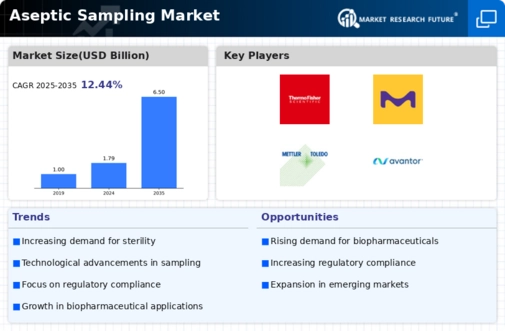
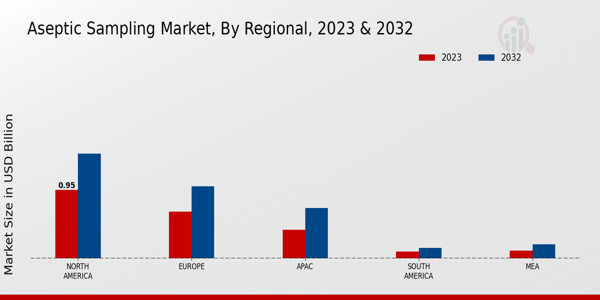
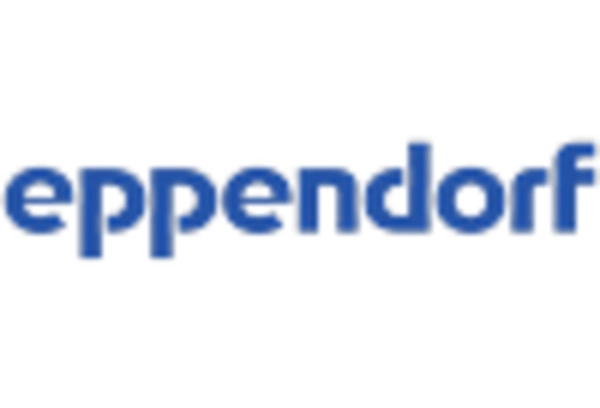


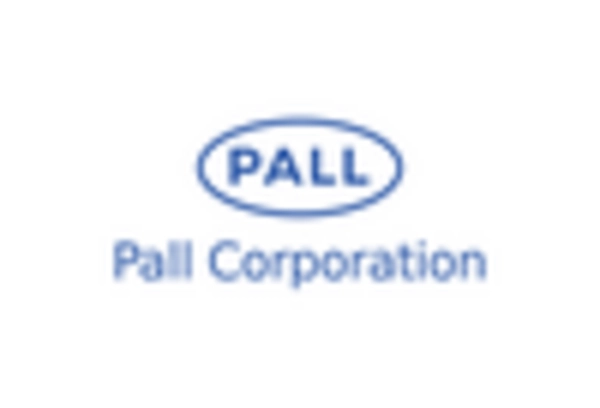
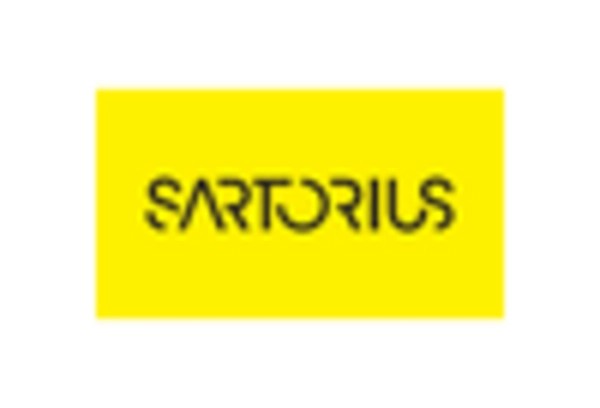
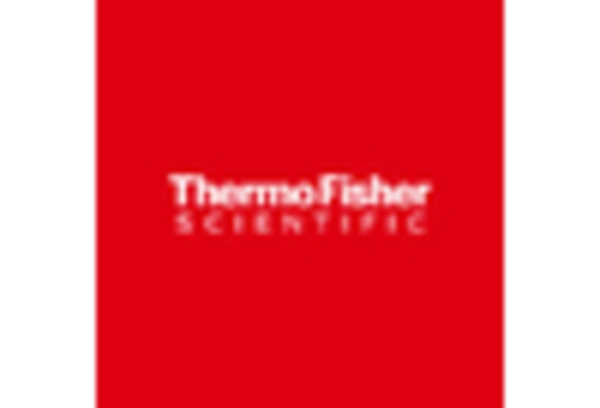

Leave a Comment